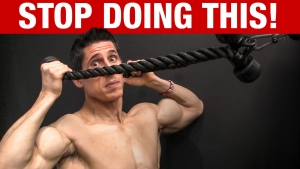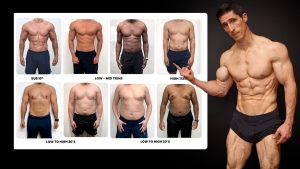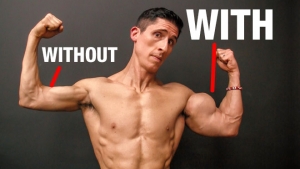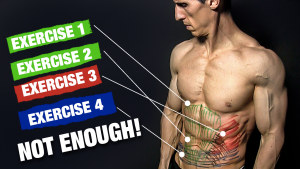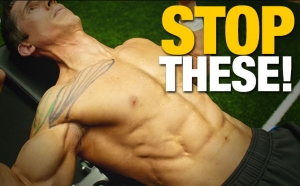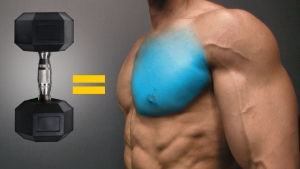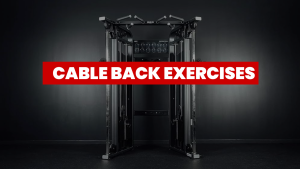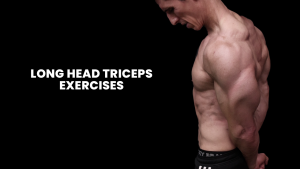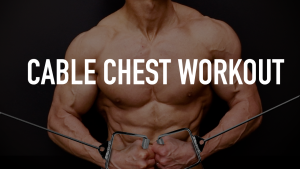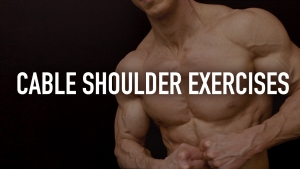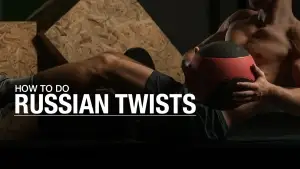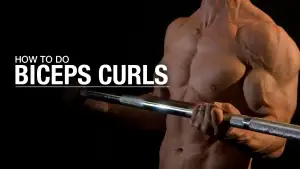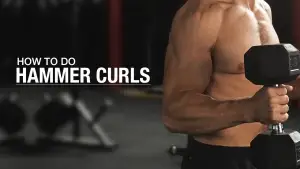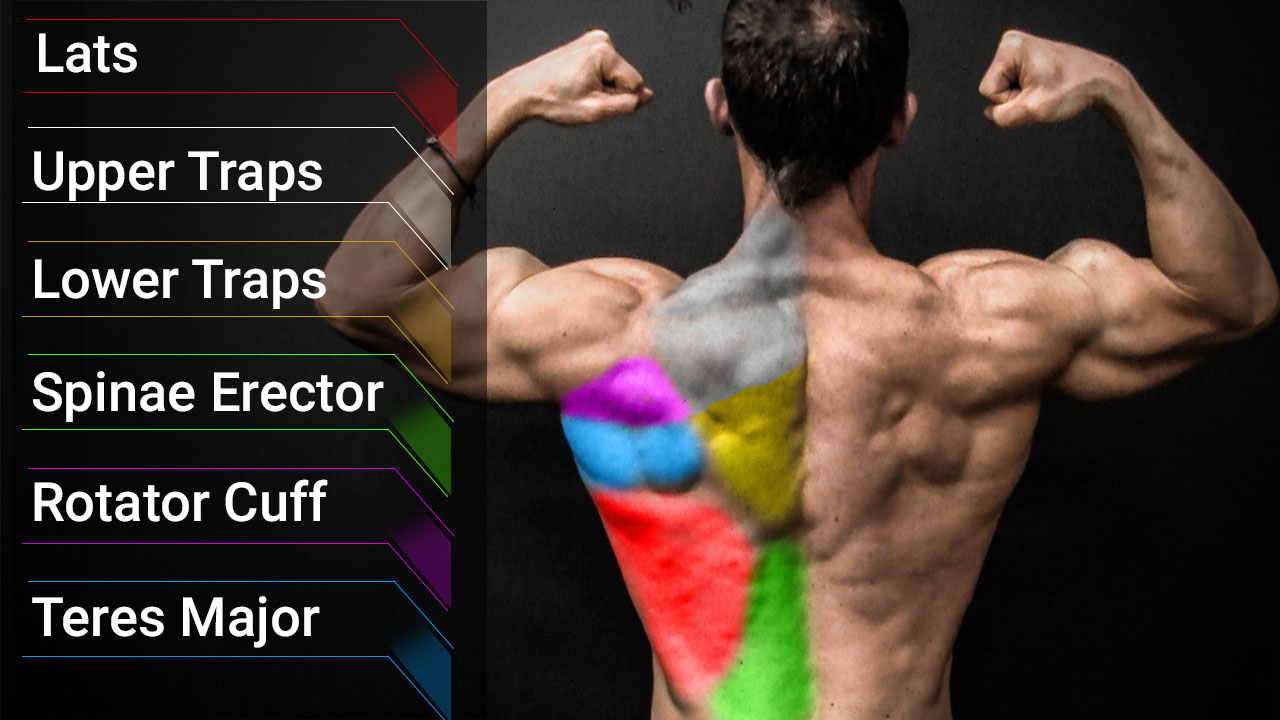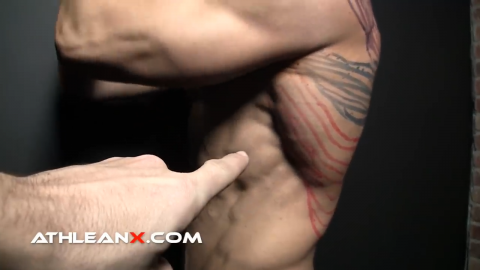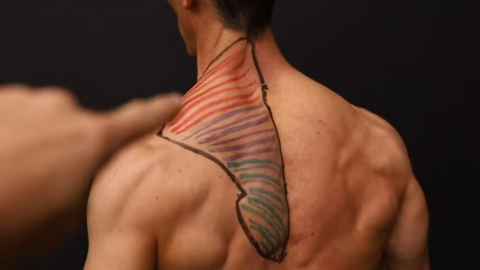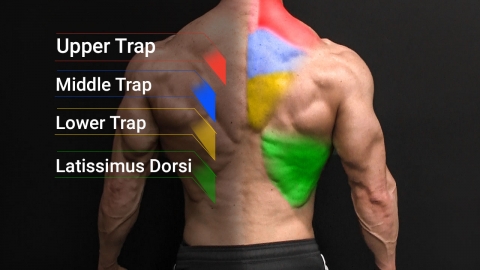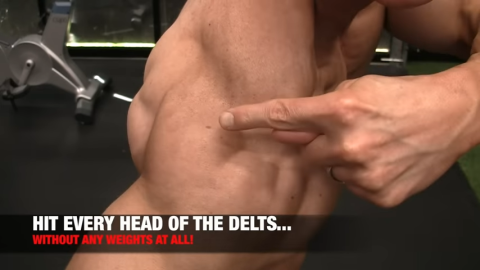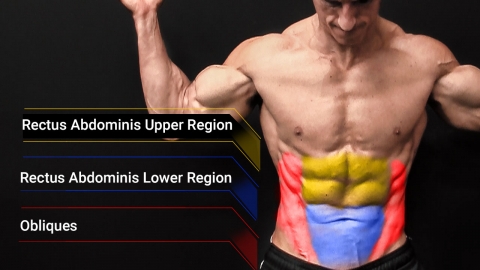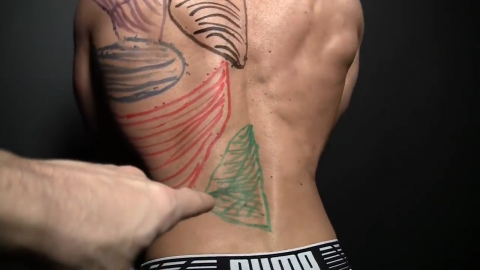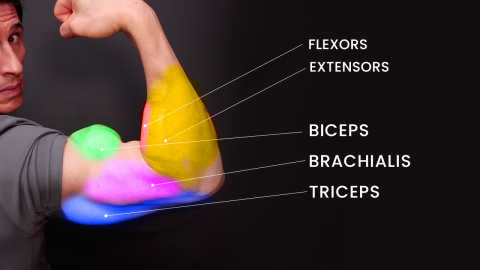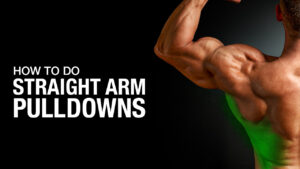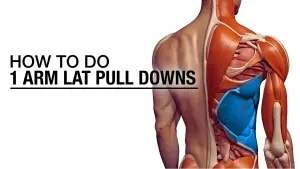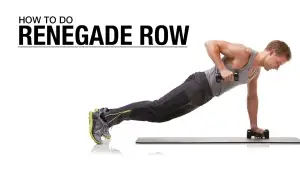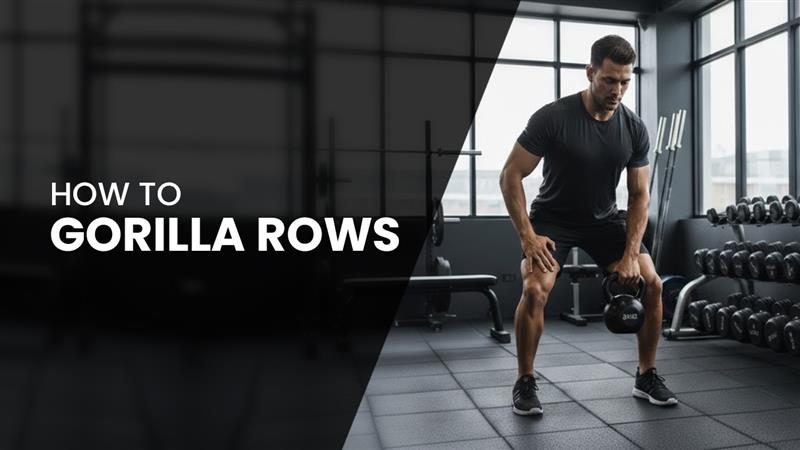
WHY do gorilla rows?
Load a barbell, throw it around with your arms, swing your torso, and suddenly the movement looks impressive while your lats get almost nothing out of it.
Gorilla Rows strip away the excuses.
The perfect position and proper form of Gorilla Rows force you to brace, to control rotation, and to row with the proper muscles that are supposed to do the work.
No hiding behind momentum and no disguising sloppy mechanics. Just functional applications for your fitness goals.
Today, you’ll learn about the target muscles for the Gorilla Rows, how to perform the exercise for maximum effect, the biggest mistakes to avoid, and how to program them into your training for the best back-building results.
GORILLA ROWS: MUSCLES WORKED
Gorilla Rows aren’t just another type of row variations of Barbell Rows or Dumbbell Bent-Over Rows.
They take the hip-hinge position of Bent Over Rows, strip away momentum, and force your back muscles to do the work.
By alternating pulls, this is one of the few advanced exercises that keeps constant tension and builds both strength and stability across multiple muscle groups.
Pull a mindset shift and think of it as a hybrid movement: part Dumbbell Row, part anti-rotation core drill, and all back-builder.
In order to perfect your form and execution of the Gorilla Row, you’ll want to know exactly which muscle groups are involved.
LATISSIMUS DORSI
Let’s kick things off with the main stars of the show: the latissimus dorsi.
The lats are the large, wing-shaped muscles that run from your mid-back down to your pelvis, wrapping under the armpits.
Their main job is shoulder extension, adduction, and internal rotation, which is basically pulling your arms back and down.
During the Gorilla Row, every pull demands you drive your elbows toward your hips, a direct action of the lats.
Compared to an Adjustable Cable Machine Row or Pull Up, Gorilla Rows force each lat to work independently while the other side stabilizes, eliminating the ability to mask weakness with momentum.
TRAPEZIUS MUSCLES
Next up, the trapezius muscles span from the base of your skull down to your mid-back and across to your shoulder blades.
Upper fibers elevate the scapula (shrugging), mid fibers retract them, and lower fibers depress them. Together, they stabilize the shoulder girdle.
When you perform a Gorilla Row, the traps lock your shoulder blades in place while you row.
Instead of shrugging the weight like in sloppy Barbell Bent-Over Rows, the Gorilla Row teaches controlled scapular retraction and depression, building upper back thickness and improving posture.
RHOMBOIDS
Rhomboids sit beneath the traps, attaching the spine to the shoulder blades.
Their main role is scapular retraction or pulling the shoulder blades back and together.
During the Gorilla Row exercise, each alternating pull forces the rhomboids to squeeze hard to prevent your chest from collapsing forward.
That’s why Gorilla Rows build the kind of postural strength you don’t get from machine-based rowing exercises like the Hammerstrength Machine or Seated Cable Rows.
REAR DELTOIDS
You’ll find the posterior deltoids on the back of the shoulders, opposite the front delts.
They are responsible for horizontal abduction and external rotation of the shoulder.
The rear delts assist the lats in pulling the arm back when you do a Gorilla Row.
Since Gorilla Rows are performed in a strict hip hinge, the rear delts are recruited more effectively than in a Single-Arm Row or even a Seal Row, helping round out shoulder development and correcting muscle imbalances.
CORE MUSCLES
Your core muscles include the abdominals, obliques, and deep stabilizers (like the transverse abdominis). These muscles wrap around your trunk.
They provide core strength, abdominal stability, and resist unwanted rotation or flexion.
The alternating pull during a Gorilla Row makes this a core stabilization challenge.
Your obliques and transverse abdominis fight to keep the torso from twisting, while the rectus abdominis prevents you from rounding forward.
Unlike Seated Rows or Ring Rows, Gorilla Rows double as an anti-rotation core drill that carries over to functional fitness and hybrid movements.
ERECTOR SPINAE (SPINAL ERECTORS)
You’ll find the erector spinae or spinal erectors running vertically along the spine from the sacrum to the skull.
This muscle group extends the spine and maintains posture during hip hinge movements.
When you perform the Gorilla Row, the erector spinae fire to hold the hip-hinge position, protecting against lower back pain while allowing the rest of the back muscles to work.
This makes the Gorilla Row safer and more sustainable than heavy Pendlay Rows or high-risk exercises where form often breaks down.
BICEPS BRACHII & FOREARMS
The biceps brachii run along the front of the upper arm, with two heads (long and short) crossing both the shoulder and elbow joints.
Meanwhile, the forearm flexors line the inside of the forearm, attaching from the medial epicondyle down into the wrist and hand.
The biceps brachii flex the elbow, rotate the forearm, and even assist with shoulder movement, which makes them far more than just show muscles.
The forearm flexors handle wrist flexion and grip strength, locking the dumbbell or kettlebell in place under heavy load.
During Dumbbell or Kettlebell Gorilla Rows, these muscle groups act as secondary movers, but they’re working hard on every rep.
The neutral grip challenges grip endurance while the constant pulling builds elbow flexion strength, carrying over to Pull Ups, T-Bar Rows, Kettlebell Rows, and heavy grip work like Kroc Rows.
HOW TO DO GORILLA ROWS
There’s no shortage of rowing movements including Dumbbell Bent Over Rows, Meadows Rows, Renegade Rows, and even Machine Bench Pulls on a flat bench. But almost all of them let you cheat your way through with less-than-ideal exercise form.
The Gorilla Row is different.
By locking you into a hip hinge and forcing alternating pulls, you turn the row into a total tension complex: back work, core stability, and scapular mobility all in one.
Think of it as a hybrid between One Arm Rows and a core drill that is designed to build real upper body strength and muscle mass that carries over to compound lifts.
Let’s take a closer look at how to do Gorilla Rows with perfect form every time.
DUMBBELL GORILLA ROW
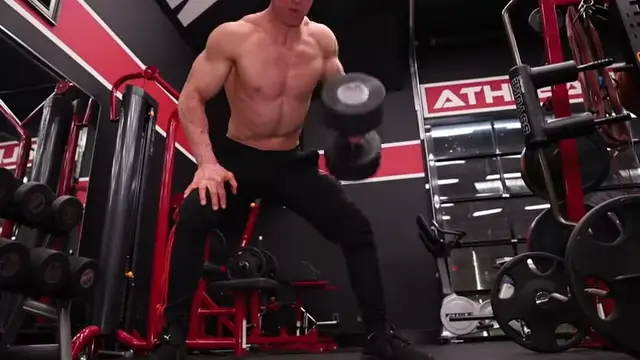
HOW TO DO DUMBBELL GORILLA ROWS:
- Grab a dumbbell or single kettlebell and place it on the floor between your legs. If you have limited equipment, you can also loop a resistance band under your feet and row the handles in the same position.
- Take a sumo stance with your feet slightly wider than shoulder width and your toes turned out just a bit.
- Push your hips back into a split stance hip hinge. Keep your chest just above parallel to the floor, spine neutral, and core braced.
- Grab the handles with both hands and palms facing your body. This isn’t a Kettlebell Roll or a balance boards circus trick. Lock in your core muscles and prepare to stabilize.
- Drive one elbow back toward your hip while keeping the other arm straight. Think about pulling your shoulder blade down and back, not just moving the weight.
- Lower under control, then row with the opposite arm. Be sure to keep tension constant on the lats.
- As for reps & weight, I’d recommend starting with moderate weight you can control for 8 to 12 reps per side. Once form is solid and there are no discrepancies in strength, you can build heavier loads for muscular development and functional strength.
WHAT MAKES IT EFFECTIVE: Most rowing exercises let momentum take over. Gorilla Rows don’t. The alternating pull forces your obliques and deep core stabilizers to resist rotation while the hip-hinge position loads the erector spinae and trains proper scapular retraction. You’re building more than muscle mass. You’re improving posture, strength, and control. This is a power move that fits anywhere, from circuit training to heavy back day work, and all it takes is a dumbbell and strict form.
GORILLA ROWS: COMMON MISTAKES
Even excellent exercises can be ruined by bad execution. Gorilla Rows are built to fix sloppy pulling mechanics, but only if you respect the form.
If not, you’ll end up with the same problems: poor scapular mobility, wasted reps, and no real progress in muscular development.
Here are the most common errors for the Gorilla Row and how to avoid them.
USING YOUR ARMS INSTEAD OF YOUR BACK
One of the biggest errors with Gorilla Rows is using your arms instead of your back.
Too many lifters flex the elbow first and let the biceps brachii take over, turning the row into little more than a curl.
It’s the same issue you see on the pullup bar when people yank themselves up with their arms instead of driving with the lats.
The result is overdeveloped arms, an underdeveloped back, and no real improvement in scapular control.
To fix it, think about leading with the elbow and pulling the shoulder blade into your back pocket. This is how you engage the lats, traps, and rhomboids.
TWISTING THROUGH THE TORSO
Another common problem is twisting through the torso on every rep, which turns the Gorilla Row into a messy One Arm Row.
This usually happens because the core isn’t braced, or because someone is trying to row more reps and weight than they can stabilize.
The cost is wasted tension, poor core stability, and extra stress dumped on the lower back.
Instead, brace like you would during a Dumbbell Bench Press. Keep the ribcage locked down, hips square, and chest fixed in place.
The alternating pull should challenge your core, not twist it out of position.
SHRUGGING THE SHOULDERS
Shrugging the shoulders is another mistake that kills the effectiveness of the exercise.
Lifters elevate the shoulders and let the upper traps dominate, instead of retracting the scapula and pulling with the mid-back.
This leads to neglected rear delts, poor postural strength, and the rounded-shoulder look instead of the wide, powerful upper body that people associate with an Olympic body.
The cue here is simple: elbows back and down, not up toward the ears. Pull with the back, not the neck.
RUSHING THE ECCENTRIC
Then there’s rushing the eccentric. Too many lifters let the dumbbells crash to the floor, especially when the weights are too heavy or when they’re treating the Gorilla Row like a circuit training move.
The eccentric phase is where a huge part of muscle mass and strength is built, and skipping it means cutting results in half.
Not to mention, you’ll start to notice that certain muscle groups are compensating for strength discrepancies.
Control the negative for at least two seconds. If you can’t, the load is too heavy, and your form is already compromised.
GOING TOO HEAVY, TOO SOON
Expanding on the point above, the most damaging mistake is going too heavy, too soon.
Lifters pile on dumbbells that belong in a deadlift, not a precise rowing movement, and the form collapses instantly.
Hips shoot up, the spine rounds, and the alternating pull becomes nothing more than a jerky arm tug.
The back muscles stop working and the lower back takes the hit. Gorilla Rows are about control and total tension, not brute force.
Start lighter, own the range of motion, and build load gradually. That’s how you get stronger, safer, and bigger without wrecking your form or your spine.
GORILLA ROW: VARIATIONS
You don’t need a hundred ways to do the same exercise. What you need are smart tweaks that change the challenge without changing the purpose.
Gorilla Rows are already designed to stop cheating and force real back engagement, so the right variations should keep that integrity intact.
Done properly, these versions let you hit the same muscles from new angles, build activation for stability in different ways, and keep your training progressing instead of stalling.
DEAD ROWS

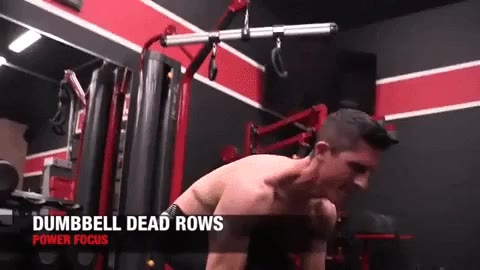
HOW TO DO DUMBBELL DEAD ROWS:
- Place a loaded barbell on the floor, just like you would for a deadlift.
- Stand with your feet shoulder-width apart, shins close to the bar, and take a double-overhand or mixed grip.
- Push your hips back into a strong hip-hinge position with your chest angled forward and spine neutral. Engage your core like you’re about to take a punch.
- Instead of pulling from a hanging position, start every rep from the floor.
- Drive your elbows straight back toward your torso, keeping the bar tight to your body.
- Lower the bar all the way to the ground with control. Let it come to a dead stop before the next rep. Every repetition is a fresh pull, not a bounce.
WHAT MAKES IT EFFECTIVE: Dead Rows blend the Deadlift and Barbell Row into one power move. Starting every rep from the floor forces explosive pulling strength without momentum, making the lats, traps, and rhomboids work harder while the erector spinae and core lock your spine in place. Resetting each rep builds muscle mass, starting strength, and upper back thickness with less risk to the lower back. Not to mention, the carryover to deadlifts, cleans, and other pulls is huge.
meadows row

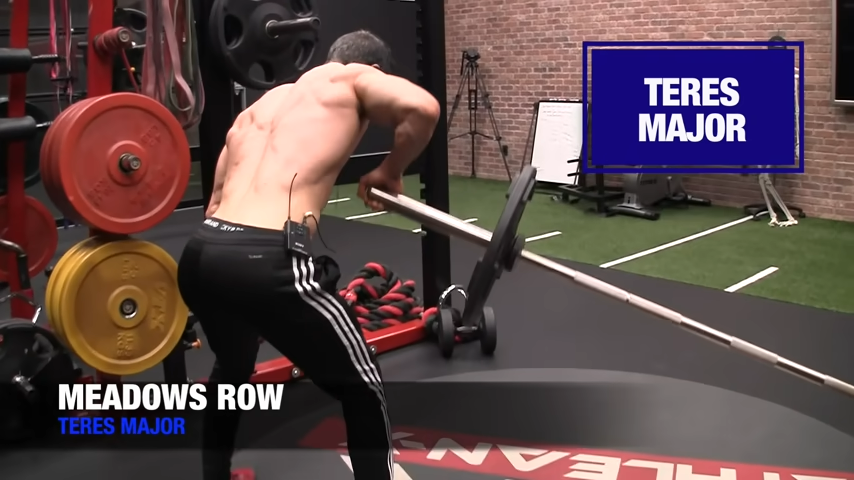
HOW TO DO THE MEADOWS ROW:
- Position a barbell in a landmine attachment or wedge one end into a corner. Stand perpendicular to the bar with a staggered stance, inside foot forward, outside foot back.
- Bend at the hips into a strong hinge and grab the thick end of the barbell with an overhand grip, arm straight.
- Keep your chest angled toward the floor and spine neutral.
- Drive the elbow back and up toward your hip, keeping it close to your side. Focus on pulling with the back, not curling with the arm.
- Control the eccentric. Don’t let the bar just drop. Reset your shoulder blade at the bottom before the next rep.
WHAT MAKES IT EFFECTIVE: The Meadows Row, created by John Meadows, is a unilateral row that hammers the lats and mid-back through a longer range of motion than a dumbbell row while the thick bar end builds grip strength. Training one side at a time corrects imbalances from Barbell Rows or Pull-Ups, and the stretched pulling angle lights up the lats, traps, rhomboids, and rear delts. It’s a back-thickening move with real carryover to every pull.
RENEGADE ROW

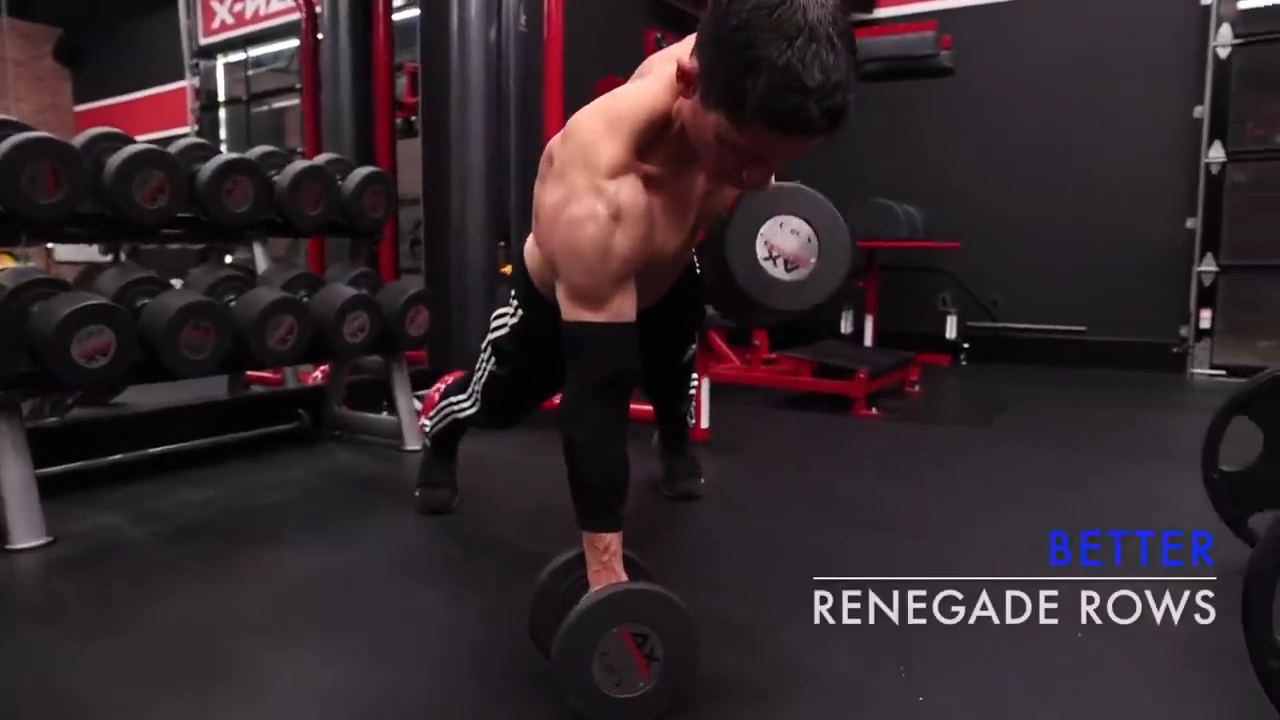
HOW TO DO THE RENEGADE ROW:
- Grab a pair of dumbbells and get into a pushup position with your hands on the handles, feet slightly wider than shoulder width for stability. Keep your body in a straight line from head to heels.
- Squeeze your glutes and tighten your core like you’re locking into a plank. This isn’t just about the row. It’s a total-body stability drill.
- Drive one dumbbell up by pulling your elbow toward your hip while keeping your shoulders and hips square to the floor. Don’t twist through the torso.
- Return the weight under control, reset your shoulder blade, and switch sides. Alternate for the desired number of reps.
WHAT MAKES IT EFFECTIVE: Renegade Rows merge a Dumbbell Row with a plank, building back strength and core stability at the same time. The lats, traps, and rhomboids drive the pull while the obliques and erector spinae fight rotation, creating anti-rotation tension you won’t get from other rows. Holding the pushup position also develops shoulder stability and total-body control, making this a true hybrid power move with carryover to both strength training and athletic performance.
PENDLAY ROW

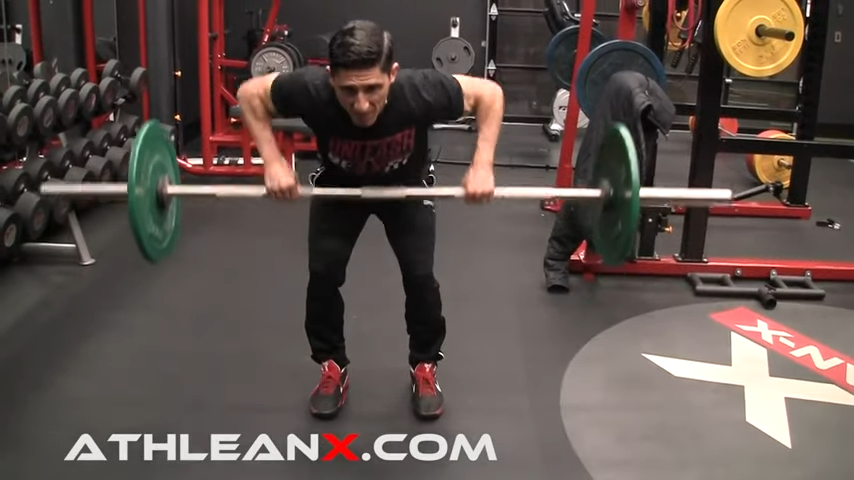
HOW TO DO THE PENDLAY ROW:
- Load a barbell on the floor and take a stance just wider than shoulder width.
- Hinge at the hips until your torso is parallel to the ground, spine locked neutral and grip the bar just outside your knees.
- Lock in your core activation and squeeze your lats before the pull. Think “set the back” before you even move the weight.
- Explosively drive the elbows back to pull the bar into your upper stomach or lower chest. No swinging, no shrugging. This is a strict pull from the floor.
- Lower the bar all the way back to the ground. Every rep starts from a dead stop, just like a deadlift.
WHAT MAKES IT EFFECTIVE: Pendlay Rows are all about pure pulling strength. Every rep starts from the floor with no momentum, forcing the lats, traps, and rhomboids to fire explosively while the spinal erectors and core keep the torso parallel.
GORILLA ROWS: PROGRAMMING AND PROGRESSION
An exercise is only as good as the plan behind it. You can have perfect form on Gorilla Rows, but if you’re just sprinkling them into workout plans without structure, you won’t see much change.
Programming determines whether this move stays a novelty or becomes one of the key drivers of your back development.
Here’s how to put Gorilla Rows to work including when to use them, how many reps to hit, and the smartest ways to progress without sacrificing form.
PLACEMENT IN YOUR WORKOUT
Gorilla Rows are best slotted on upper body pull days, full back sessions, or as an accessory move after compound movements. They also work well during circuit-type sessions.
They aren’t meant to replace those lifts, but to reinforce better form, core stability, and scapular control that transfers to every other pulling exercise for building strength.
Think of them as the bridge between raw strength work and precise muscle-building.
REP RANGES
The goal dictates the reps because the way you load and count each set completely changes the outcome.
For pure strength, keep it heavy and tight in the 4 to 6 rep range.
For hypertrophy, the sweet spot is 8 to 12 controlled reps where the back does all the work.
If you’re chasing muscular endurance or conditioning, you can push to 12 to 15+, but only if you can lock your core and prevent rotation.
PROGRESSIVE OVERLOAD
Progression doesn’t just mean slapping more plates on the dumbbell rack. Add weight only when your form stays strict from the first rep to the last.
Slow the eccentric to increase time under tension. Two to three seconds down will light up your lats more than an extra ten pounds ever will.
You can also build progression by adding sets across your training block. The key is making the muscles work harder, not making the movement look heavier.
FREQUENCY
Once or twice a week is plenty. On a standard Push–Pull–Legs split, hit Gorilla Rows every pull day.
On a full-body or upper/lower split, slot them once per week and rotate variations like Dead Rows or Renegade Rows, if you want extra volume.
Just remember that more isn’t better if recovery falls apart. Heavy back work demands time to adapt.
Gorilla Rows expose whether you’re training your back or just moving weight around.
They demand stability, control, and precision, and they’ll reward you with strength and size that carry over to every other pull you do.
Program them with purpose, and your back will finally start growing the way it should.
Check out our complete line of ATHLEAN-RX Supplements and find the best training program for you based on your fitness level and goals.
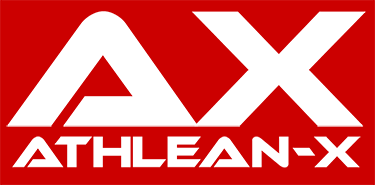
- The Gorilla Row forces strict pulling mechanics while challenging core stability, keeping the lats, traps, and rhomboids under constant tension without letting momentum do the work.
- Here’s how to do Gorilla Rows with proper form:
- Put a dumbbell or kettlebell on the floor between your feet and take a wide, sumo stance.
- Hinge at the hips until your chest is angled forward and your back is flat, then grip the handle with both hands.
- Brace your core like you’re locking into a plank.
- From here, row one hand to your rib cage while the other keeps the weight steady on the floor.
- Lower under control, switch sides, and keep alternating.
- Think elbows back, not hands up, and fight to keep your torso square.
- If you don’t have free weights, loop a resistance band under your feet and row the handles from the same hip-hinge position. The band gives you constant tension, especially at the top, and it’s a great way to nail the form before you load heavier.
GORILLA ROWS FAQ
Gorilla Rows train your entire back in one shot just as effectively (maybe even more so) as bodyweight exercises like Pull-Ups.
The lats drive the pull, the traps and rhomboids stabilize the shoulder blades, and the rear delts keep the shoulder joint balanced.
At the same time, your erector spinae hold the hip-hinge position, your obliques and abdominals fight rotation, and your forearms and grip get hammered just holding the weights.
It’s not just a back exercise. It’s a total tension move that builds size, strength, and stability from your shoulders to your core.
The Bent-Over Row is easy to cheat. Most lifters use momentum, turn it into a shrug, or round their backs to move more weight.
Gorilla Rows cut that out by forcing you into a wider stance and alternating each pull.
That setup keeps your torso locked in and adds an anti-rotation challenge you won’t get in a Standard Barbell Row.
The result is stricter form, more core involvement, and better muscle activation of the lats and mid-back.
Simply put, the Bent-Over Row lets you hide weaknesses, the Gorilla Row exposes them.
Start with a dumbbell or kettlebell on the floor. Take a wide, sumo stance, hinge at the hips, and keep your chest angled forward with a flat spine.
Grip the weights, brace your core like you’re about to get punched, and pull one elbow back toward your hip while the other arm stays straight.
Lower under control, then switch sides.
The key is to keep your hips square, your torso still, and your shoulder blades moving. Don’t allow your torso to twist.
REFERENCES
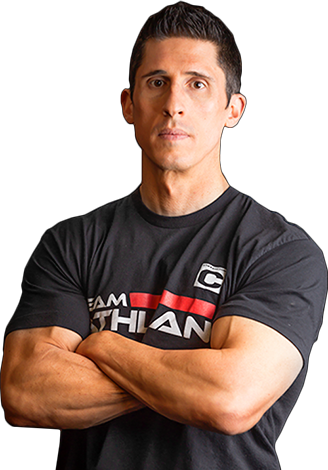
Jeff Cavaliere M.S.P.T, CSCS
Jeff Cavaliere is a Physical Therapist, Strength Coach and creator of the ATHLEAN-X Training Programs and ATHLEAN-Rx Supplements. He has a Masters in Physical Therapy (MSPT) and has worked as Head Physical Therapist for the New York Mets, as well as training many elite professional athletes in Major League Baseball, NFL, MMA and professional wrestling. His programs produce “next level” achievements in muscle size, strength and performance for professional athletes and anyone looking to build a muscular athletic physique.
